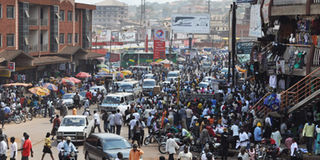Population of Uganda rises by more than 10m people

What you need to know:
The country’s population has increased by slightly more than 10 million people between 2002 and 2014.
Kampala. The country’s population has increased by slightly more than 10 million people between 2002 and 2014.
According to the National Population and Housing Census 2014 final results released by the Uganda Bureau of Statistics (Ubos) yesterday, the country’s total population is 34.6 million persons, slightly lower than the 34.9 million that was projected in the provisional results released in November 2014.
The change, according Ubos, is a result of tightening loose ends and getting rid of ghost entries following thorough verification.
The growth in population represents an increase of 10.4 million persons between 2002 and 2014 census.
This is the 10th census since Uganda came into existence. The first census was conducted in 1911 by the colonial administration and the total population then was registered as 2.5 million. Other censuses were subsequently conducted in 1921, 1931, 1948 and 1959 still by the colonial administration. The first census conducted by the independent government was in 1969, and subsequently in 1980, 1991, 2002 and 2014.
According to the report launched yesterday by President Museveni, the population of women compared to men has remained higher, with a difference of about a half a million. The male population is 17,060,832 while the female are 17,573,818, totalling to a population of 34, 634, 650.
The census enumerated 7.3 million households countrywide, with the majority of the households (75 per cent) residing in rural areas. Thirty per cent of the households are female-headed. In average, each household has about five people.
In terms of age distribution, the census found that youth of 18-30 years make up 22.5 per cent of the population, and those of 15 and 64 years make up 49 per cent. Only 2.7 per cent are aged above 65 years. . (NMG)




